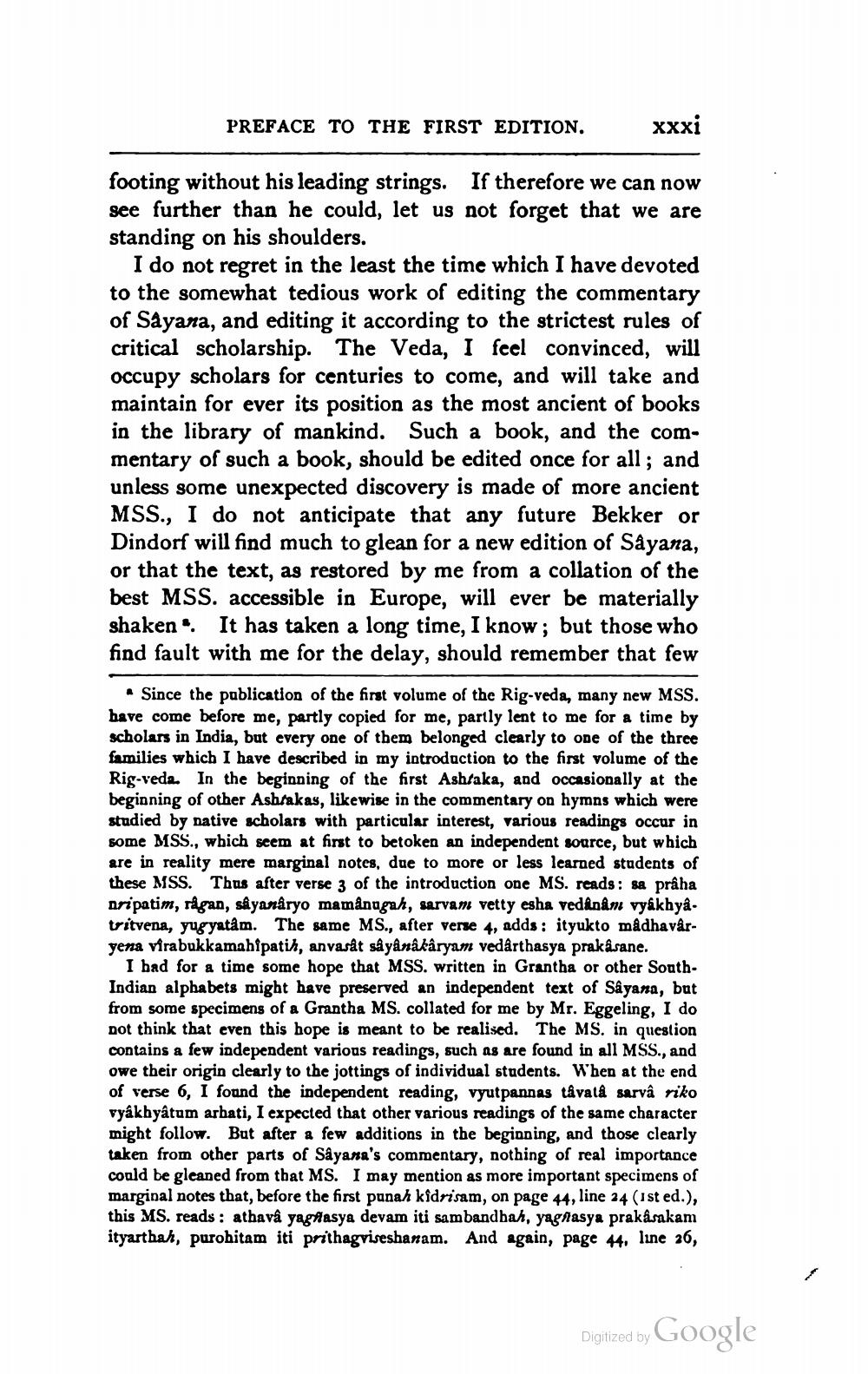________________
PREFACE TO THE FIRST EDITION.
xxxi
footing without his leading strings. If therefore we can now see further than he could, let us not forget that we are standing on his shoulders.
I do not regret in the least the time which I have devoted to the somewhat tedious work of editing the commentary of Sayana, and editing it according to the strictest rules of critical scholarship. The Veda, I feel convinced, will occupy scholars for centuries to come, and will take and maintain for ever its position as the most ancient of books in the library of mankind. Such a book, and the commentary of such a book, should be edited once for all; and unless some unexpected discovery is made of more ancient MSS., I do not anticipate that any future Bekker or Dindorf will find much to glean for a new edition of Sâyana, or that the text, as restored by me from a collation of the best MSS. accessible in Europe, will ever be materially shaken. It has taken a long time, I know; but those who find fault with me for the delay, should remember that few
• Since the publication of the first volume of the Rig-veda, many new MSS. have come before me, partly copied for me, partly lent to me for a time by scholars in India, but every one of them belonged clearly to one of the three families which I have described in my introduction to the first volume of the Rig-veda. In the beginning of the first Ashtaka, and occasionally at the beginning of other Ashtakas, likewise in the commentary on hymns which were studied by native scholars with particular interest, various readings occur in some MSS., which seem at first to betoken an independent source, but which are in reality mere marginal notes, due to more or less learned students of these MSS. Thus after verse 3 of the introduction one MS. reads: sa prâha nripatim, rågan, sâyanâryo mamânugah, sarvam vetty esha vedânâm vyâkhyâtritvena, yugyatâm. The same MS., after verse 4, adds: ityukto mâdhavâryena virabukkamahîpatik, anvasât sâyânâkâryam vedârthasya prakâsane.
I had for a time some hope that MSS. written in Grantha or other SouthIndian alphabets might have preserved an independent text of Sâyana, but from some specimens of a Grantha MS. collated for me by Mr. Eggeling, I do not think that even this hope is meant to be realised. The MS. in question contains a few independent various readings, such as are found in all MSS., and owe their origin clearly to the jottings of individual students. When at the end of verse 6, I found the independent reading, vyutpannas tâvatâ sarvâ riko vyâkhyâtum arhati, I expected that other various readings of the same character might follow. But after a few additions in the beginning, and those clearly taken from other parts of Sâyana's commentary, nothing of real importance could be gleaned from that MS. I may mention as more important specimens of marginal notes that, before the first punah kidrisam, on page 44, line 24 (1st ed.), this MS. reads: athava yag asya devam iti sambandhah, yagnasya prakasakam ityarthah, purohitam iti prithagviseshanam. And again, page 44, line 26,
Digitized by Google




